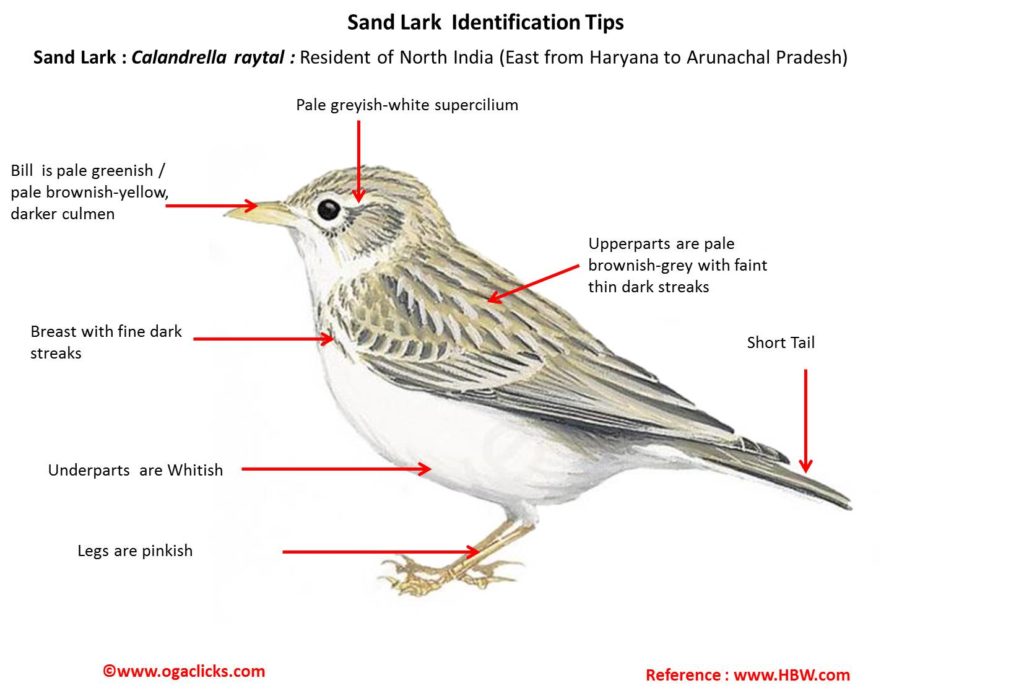
Sand Lark Calandrella raytal
Etymology:
- Calandrella : Greek word for Lark derived from kalandros – Calandra
- Raytal : Hindi name Retal – Sand Lark
Vernacular Names: Hindi: Retal, Pun: Retal chandol, Guj: Bhavnagar nu retal chandul, Reth chandul
Distribution in India: Wide spread resident in North India.
Description:Size of 12–13 cm. It is a small, pale lark with comparatively long, slender bill, relatively short tail, distinct primary projection. The nominate race has pale greyish-white supercilium; crown and upperparts are pale brownish-grey with faint thin dark streaks, upperwing-coverts and tertials are medium grey-brown with pale buffish or buffish-white tips and edges. The remiges are dark grey-brown; tail feathers are dark grey-brown, central pair is with narrow greyish edges, outermost pair are with large white wedge on inner web. It is whitish below, fine dark streaks across breast; bill is pale greenish or pale brownish-yellow, culmen is darker; legs are pinkish. Both the sexes are similar in plumage, female on average smaller than male. The juvenile has whitish fringes and indistinct dark subterminal bands above. Race adamsi (Punjab, Harana, North West Gujarat) resembles nominate, but bill is shorter and slightly thicker. Race krishnakumarsinhji ( Bhavnagar in South Gujarat) but is darker and more heavily streaked above.
Habitat: It is found in dry, sandy riverbanks and islands in rivers. Race adamsi also occurs in sandy areas along coast and on dry margins of some large lakes. The only habitat where krishnakumarsinhji has been found is dry margins of some large lakes.
Food habits: It eats small snails, other invertebrates and seeds. It forages on the ground.
Breeding habits: They breed in Feb–May. Race adamsi breeds from Mar to May and, after good monsoons, also in Aug and Sept .In high song flight, male hangs more or less still or drifts about, alternating between a few wingbeats and short glides; in low song flight as well as during ascent to high one, it flies about in irregular “circles” with characteristically slow, deep, “rowing” wingbeats and partly fanned tail. The nest is built by both sexes. The nest is a cup-like depression in the ground, often sheltered by small bush, stone or tuft of grass, lined with animal hairs and fine vegetable matter. They lay a clutch of 2- 3 eggs. Both sexes participate in tasks of incubation and chick-feeding.